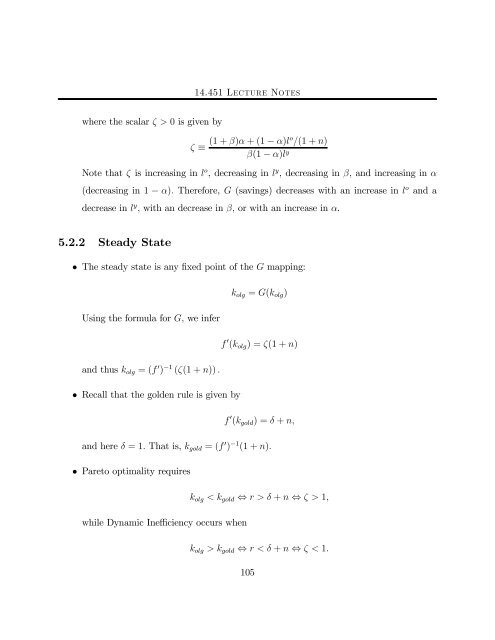14.451 Lecture Notes Economic Growth
14.451 Lecture Notes Economic Growth
14.451 Lecture Notes Economic Growth
Create successful ePaper yourself
Turn your PDF publications into a flip-book with our unique Google optimized e-Paper software.
where the scalar ζ>0 is given by<br />
<strong>14.451</strong> <strong>Lecture</strong> <strong>Notes</strong><br />
ζ ≡ (1 + β)α +(1− α)lo /(1 + n)<br />
β(1 − α)l y<br />
Note that ζ is increasing in l o ,decreasinginl y , decreasing in β, and increasing in α<br />
(decreasing in 1 − α). Therefore, G (savings) decreases with an increase in l o and a<br />
decrease in l y , with an decrease in β, or with an increase in α.<br />
5.2.2 Steady State<br />
• The steady state is any fixed point of the G mapping:<br />
Using the formula for G, we infer<br />
and thus kolg =(f 0 ) −1 (ζ(1 + n)) .<br />
• Recall that the golden rule is given by<br />
kolg = G(kolg)<br />
f 0 (kolg) =ζ(1 + n)<br />
f 0 (kgold) =δ + n,<br />
and here δ =1. That is, kgold =(f 0 ) −1 (1 + n).<br />
• Pareto optimality requires<br />
while Dynamic Inefficiency occurs when<br />
kolg δ+ n ⇔ ζ>1,<br />
kolg >kgold ⇔ r

















